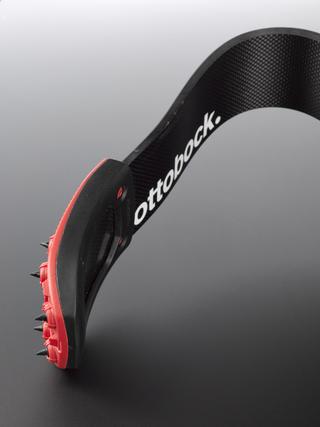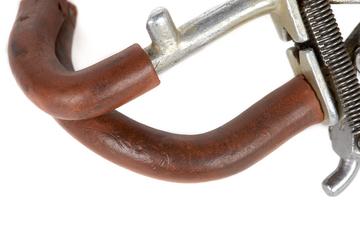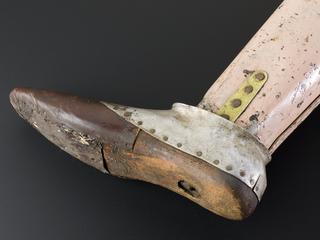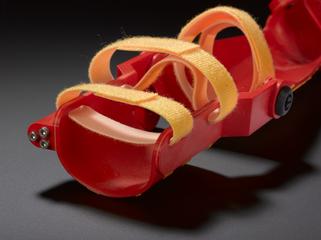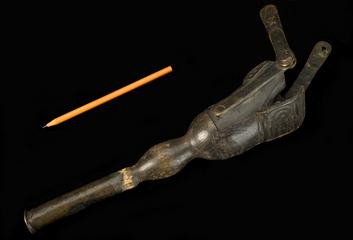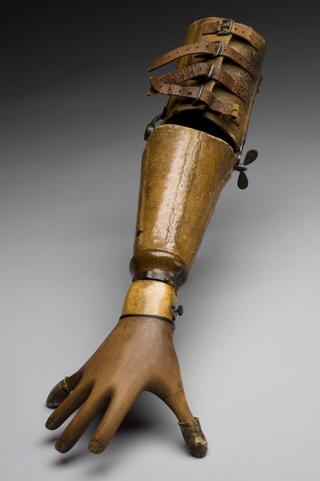




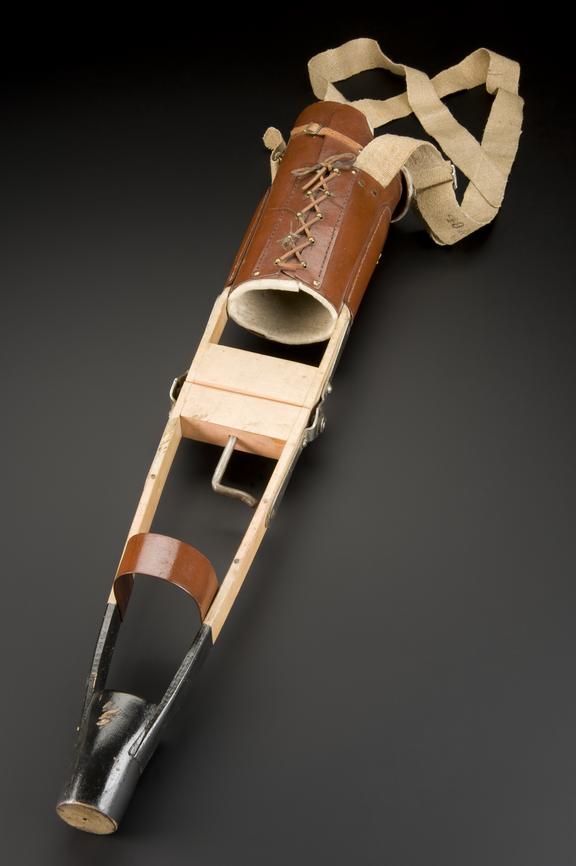
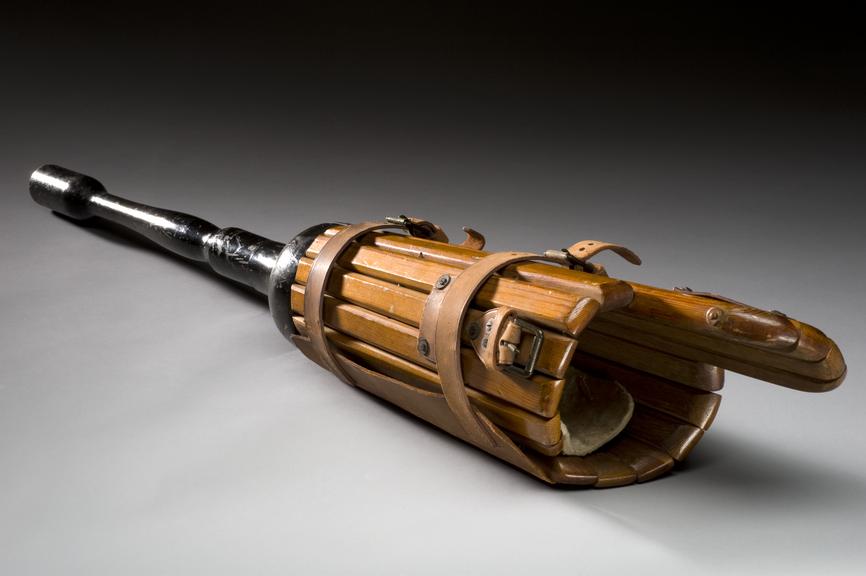
Peg-leg or "Socket" leg with a wooden self adjustable socket for a left above knee amputee. Made c.1920. (Weight: 4.75 lbs 2.1 kg).
Known as a ‘peg-leg’ or ‘socket leg’, this prosthetic leg fits over the remaining part of the left leg above the knee. Made from wood and weighing over 2 kg, the lower part of the leg has been turned and painted. The upper part of the leg is adjustable using leather straps.
Peg-legs are among the oldest and simplest of artificial leg designs. As the peg-leg does not bend, the wearer would need support from crutches to move around.
Details
- Category:
- Orthopaedics
- Object Number:
- 1999-422
- Measurements:
-
overall: 170 mm x 1060 mm x 170 mm, 2.17kg
- type:
- artificial leg
- credit:
- Richmond Twickenham and Roehampton Healthcare NHS Trust
